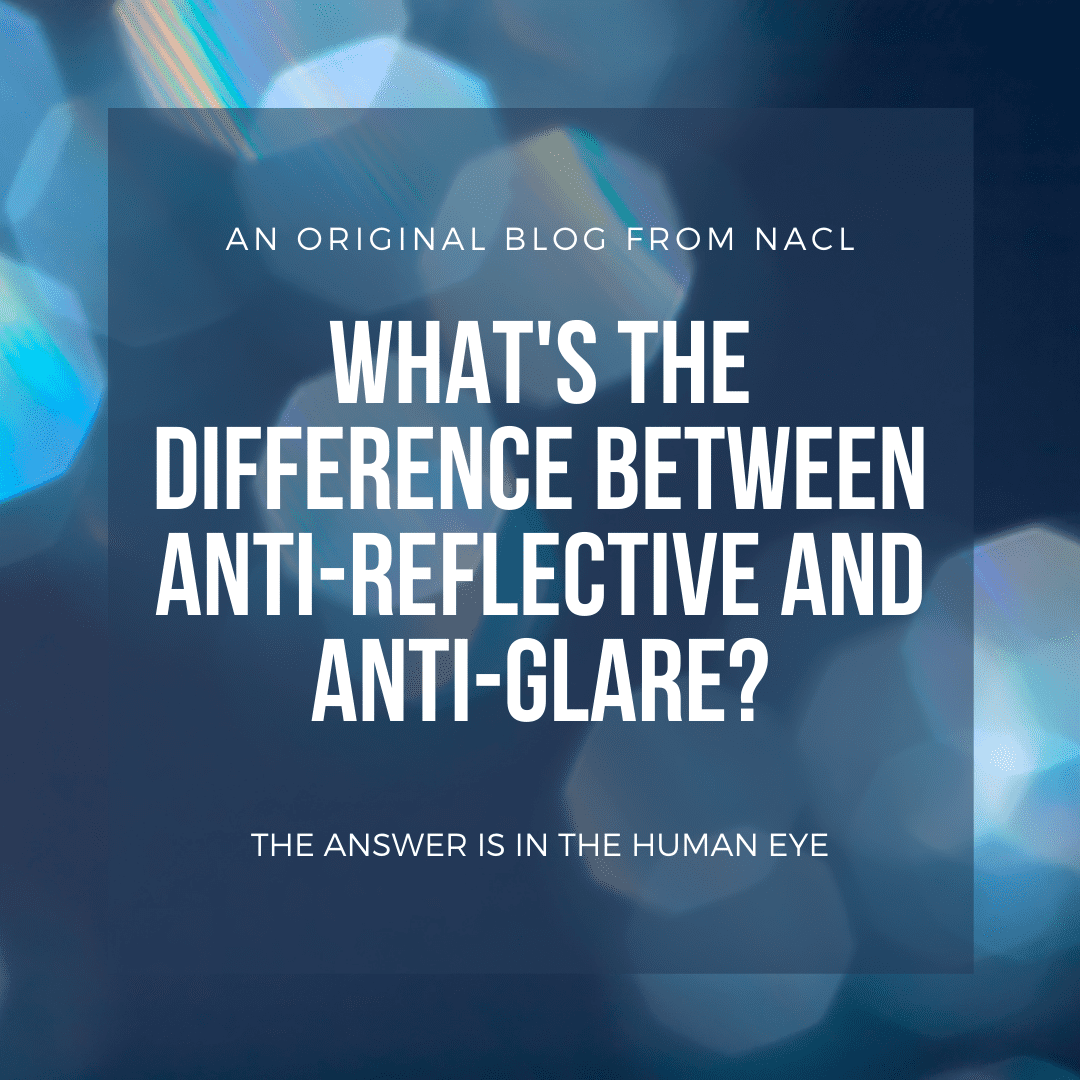A common question we receive here at North American Coating Laboratories is “what is the difference between an anti-glare process and an anti-reflective process?” The answer isn’t completely straight-forward, but once we discuss your application in further detail it’s usually easy to determine which process and treatment will be most suitable for your project.
The basic difference between anti-reflective coatings and anti-glare treatments is the capacity at which they diffuse or eliminate waves of light in all spectrums from UV to long-wave infrared.
Anti-glare solutions utilize diffusive properties to fragment the reflected light off the surface. Diffusion works by reducing the consistency of the reflected image, making these undesirable reflected images blurred or fuzzy to the eye. This reduces the reflected image’s intrusion of the intended image display. This is also known as constructive interference of light. Constructive interference occurs at any location along the substrate where the two interfering light waves have a displacement in the same direction.
Anti-reflective solutions diffuse both external and internal light waves that combine to negate the light transmitted through the substrate. As light passes from one medium such as air to another, likely an optical substrate, the difference between the refractive indices in the corresponding mediums create transitional light wave differences which invariably amplify the amount of light reflected. The reflected light accumulates and can greatly reduce the acuity of the display substrate. This accumulation of light and negated display acuity leads to displayed information becoming indistinguishable. This method of light interference is referred to as destructive interference of light.
To achieve destructive interference and improve acuity while reducing reflection North American Coating Laboratories vacuum deposits multiple layers of dielectric materials with varying refractive indices. The layers are deposited at varying thickness as well to aid in the interference of numerous light beams. When we are given the operating wavelength we can design our coatings to offer very low reflectance and optimal light transmission over the specified ranges. This can be accomplished at a very finite wavelength or a very broad wavelength within the visible light spectrum.
So those are the technical differences, but you may still be wondering how these two solutions are different? In general terms anti-glare coatings use either diffuse particles or etching on the substrate’s surface, while anti-reflective coatings utilize film structure over the substrate surface. Anti-glare is typically visible to the human eye while anti-reflective coatings typically exhibit a soft blue/green hue when deposited and is essentially invisible to the human eye minus a soft color.
To determine which solution is applicable to your application there are two rules of thumb. If your application requires high visible light transmission and there will be an air medium between your displayed information and the optical substrate then an anti-reflective coating is probably your ideal solution. In the case that your application does not have an air gap between your displayed information and there is no external light of concern than an anti-glare solution may be ideal.
There are however instances where both solutions can be used in conjunction for maximum reflection/glare reduction. Most notably are applications where a display must be read outdoors. When used in conjunction with each other anti-glare and anti-reflection solutions can provide outdoor readability for displayed information. This is particularly important for hand-held devices and electronics that are utilized outside. Some examples would be tablet PC’s, hand-held barcode scanners, and cell phones.
North American Coating Laboratories has provided anti-reflective and has worked with anti-glare coated substrates for 38 years. In all cases we can work closely with you to help determine exactly which solution will be best suited for your program.






